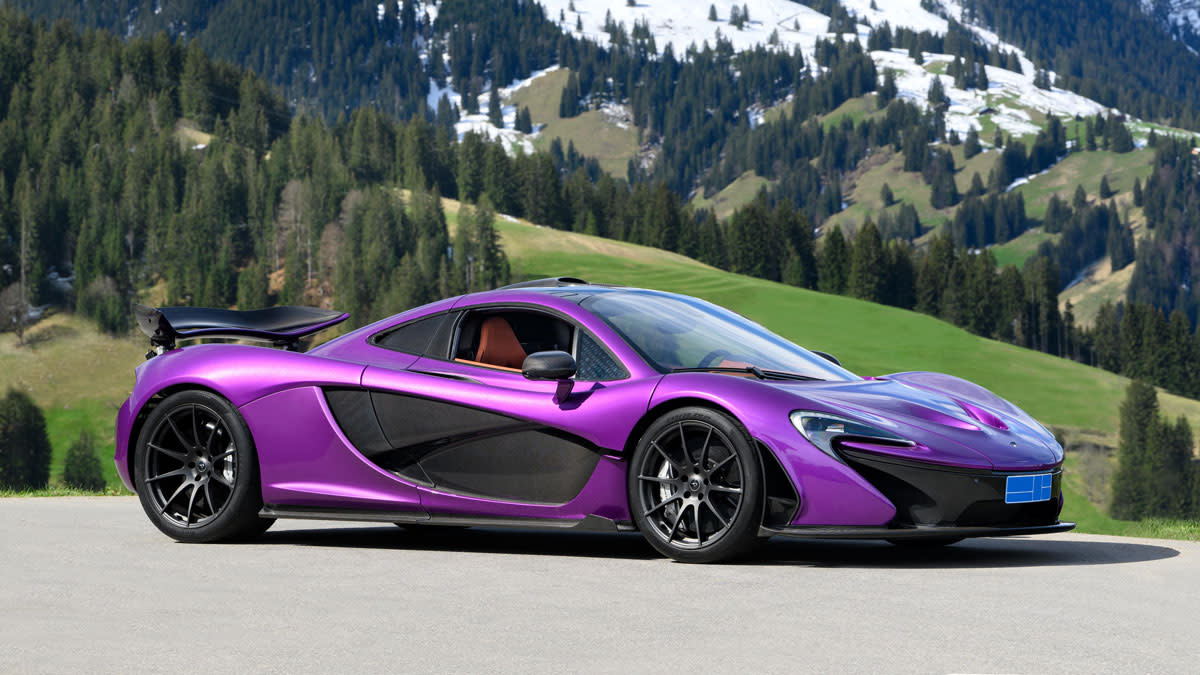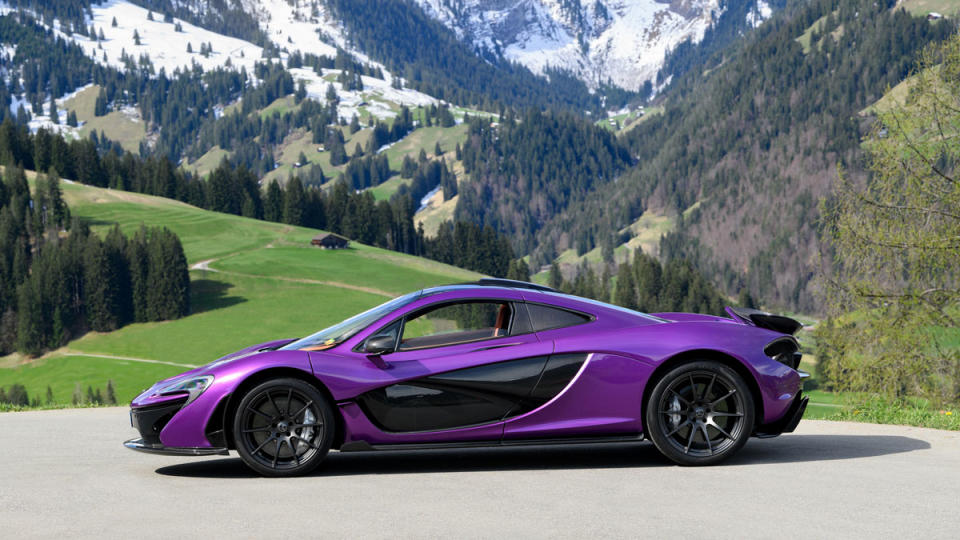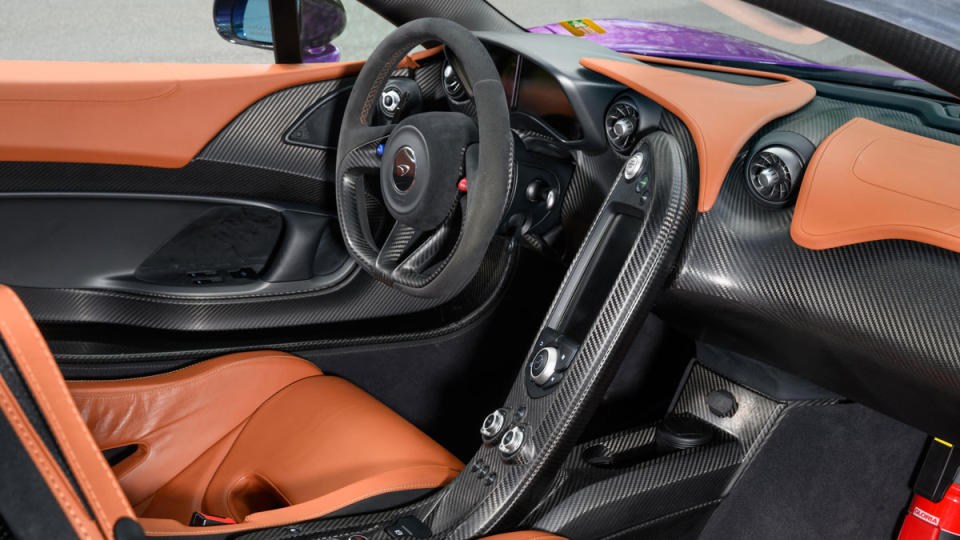Car of the Week: This Pristine 2015 McLaren P1 Could Fetch $1.3 Million at Auction

Debuting at the 2012 Paris Motor Show, the McLaren P1 was part of the hybrid-electric triumvirate—including Ferrari’s LaFerrari and Porsche’s 918 Spyder—that gave a glimpse of the next-generation of hypercar. It was the British marque’s ultimate road-car statement, a successor to McLaren’s F1 (designed by Gordon Murray and built from 1992 through 1998) and a stepping stone to the current drive toward electrification. It’s hard to believe that a dozen years have passed, and while electric mobility has advanced greatly since, the fundamentals of excitement elicited by the P1—and its now-classic status—are undiminished by the intervening time.
This 2015 McLaren P1 will be a highlight of Bonhams Cars’ Bonmont Sale in Cheserex, Switzerland, on June 30. The car is from the model’s last year of manufacture, and of the 375 examples that were produced worldwide in total, this is number 99 in the production run. With only one owner from new, it’s one of only two P1s believed to have been ordered from the factory with Mauvine Metallic paintwork. Delivered new via McLaren Dubai on December 30, 2014, it shows fewer than 14,000 kilometers (8,700 miles) at the time of cataloging.
More from Robb Report
Aston Martin Just Introduced the $2.5 Million Valiant. Here's Everything We Know.
How the Lexus LFA Became a Legend-10 Years After It Was Discontinued
Jacob & Co.'s New Bugatti Tourbillon Watch Has a Functioning V-16 Engine

When development of the P1 began in 2009, the decision was made to abandon a normally aspirated V-12 engine (a BMW-derived unit was used in the original F1) in deference to McLaren’s own engine, a 3.8-liter twin-turbocharged V-8 that was smaller and lighter. The rear-mid-mounted engine makes 727 hp and 531 ft lbs of torque. An electric motor is mounted directly onto the engine and gives additional power, for a combined output of 903 hp and 664 ft lbs of torque.

An Instant Power Assist System (IPAS) provides the electric motor with extra kick for even quicker acceleration. And the Kinetic Energy Recovery System (KERS) stores energy through braking for later use in acceleration. Mated to the power plant, a seven-speed, paddle-shift Graziano dual-clutch transmission delivers power to the rear wheels.
The P1’s performance numbers remain impressive today, such as its top speed of 217 mph and a zero-to-62 mph acceleration time of 2.8 seconds (achieving twice that speed in 6.8 seconds). In electric-only mode, the P1 has a range of about 19 miles, sufficient for sneaking out of the garage for an early morning drive on the weekend without raising the neighborhood’s ire. Once on the open road, the high-strung V-8 barks to life, and one soon forgets plug-in-anything at all.

The McLaren P1 essentially emulates a Formula 1 car in terms of its materials and construction. In an effort to minimize weight while providing maximum strength and torsional rigidity, the development team gave the model a carbon-fiber monocoque chassis that weighs just 199 pounds. Carbon-fiber bodywork adds more lightness (to paraphrase Colin Chapman), and the material is used just about everywhere, down to the shells of the racing seats in the cockpit, where the squeaky-clean design aesthetic reminds us that no other interior looks and feels like that of a McLaren. Tipping the scales at 3,076 pounds, the P1 still fat-shames most other cars purporting to be watching their weight.

Manufactured for only three years, the P1 was proof of concept then and a coveted collectible now. With an original MSRP starting at $1.15 million, this highly optioned example carries a top-end estimate of $1.3 million.
Click here for more photos of this 2015 McLaren P1.
Best of Robb Report
Sign up for Robb Report's Newsletter. For the latest news, follow us on Facebook, Twitter, and Instagram.



